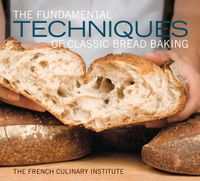Label
All
0
Clear all filters
Butter
Appears in
Most butter used in America today comes from cow’s milk, although it can be made from the milk of almost any milk-producing animal. In other parts of the world, butter is made from the milk of horses, goats, sheep, and camels. Traditionally, butter was created by churning cream by hand in a butter churn to solidify the milk fat to a spreadable consistency. In contemporary commercial butter making, the process remains almost the same, but all of the elements of it have been mechanized.
Commercially produced butter is, by governmental dictate, no less than 82.5 percent butterfat and no more than 16 percent water. It may or may not have added salt, color, and vitamins and minerals. Today’s specialty food markets now feature many artisanal or imported butters that replicate the old-fashioned hand-churned texture and flavor. These very high-fat (85 percent or more) butters are often referred to as European style and are substantially more expensive than the supermarket varieties. In bread baking, butter not only offers wonderful flavor to rich doughs, but also emits enticing aromas when heated.
Part of
Advertisement
Advertisement
The licensor does not allow printing of this title


